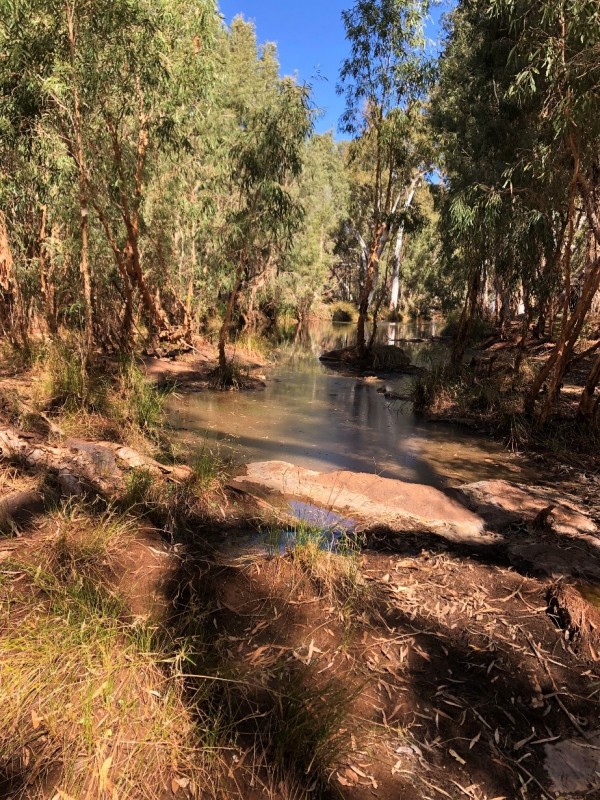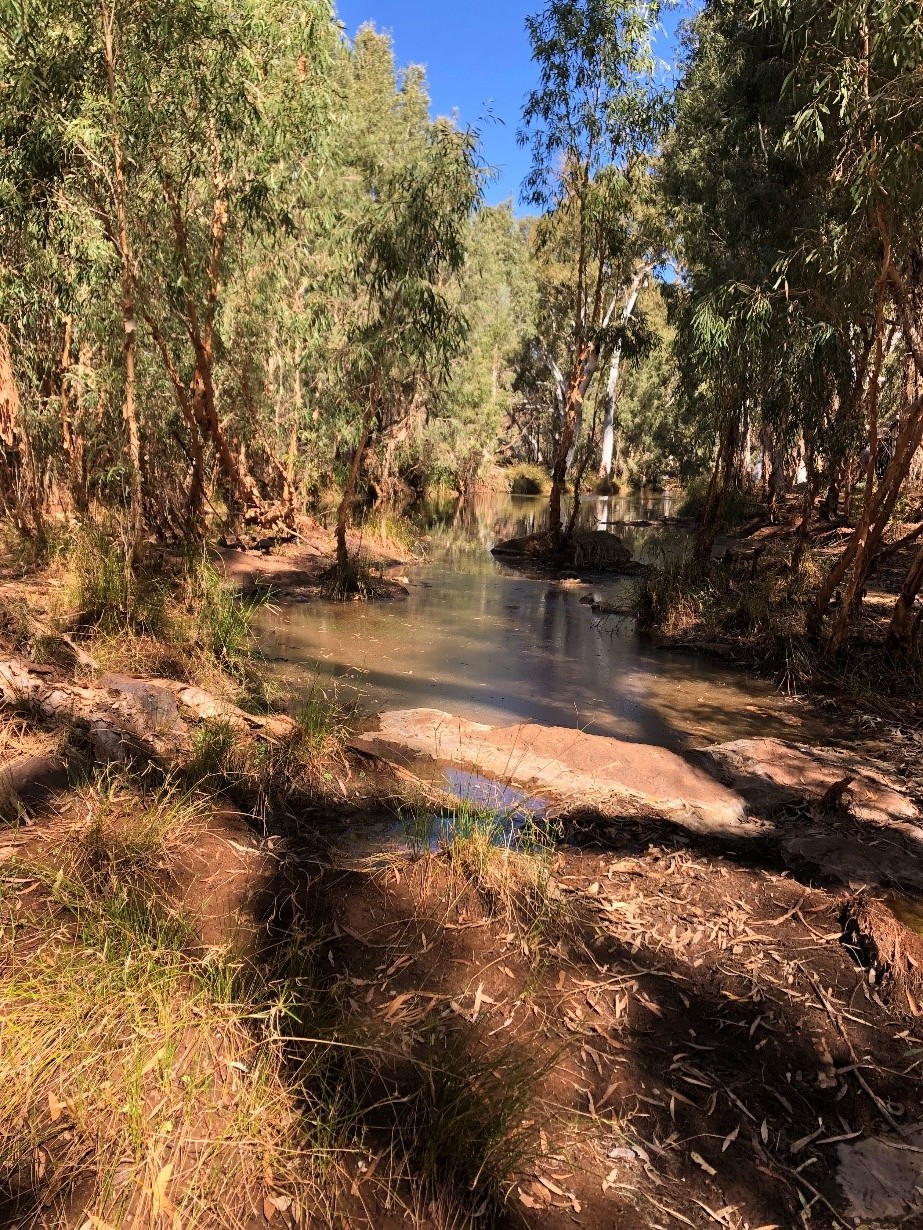Understanding the hydrogeology of billabongs is key to protecting them

Over half the world’s rivers- and over 70% of Australia’s rivers- go dry for part of each year. During these dry periods, pools of water along the river channels (also called billabongs, springs, or even wetlands) act as refugia for wildlife, sustaining them through potentially long periods between streamflow. These persistent surface water features are a critical resource for flora and fauna, and also have unique cultural value. Although there have been many studies looking at the ecology of these pools, our understanding of the hydrologic mechanisms that support them lags behind. That is because although some are simply leftover streamflow, persistent pools (that is, those that remain wet through long, hot periods with no streamflow) often rely on groundwater contributions. But, these groundwater inflows are typically difficult to measure directly, and dependent on underlying geology. So it is not a trivial task to identify why, where, and how much groundwater inflow occurs.

Pools along Weeli Wolli Creek in the Hamersley Basin, Western Australia. Due to groundwater inflows, these pools remain wet all year despite lack of streamflow at the surface. We have developed framework to understand the hydrogeological mechanisms that contribute to this groundwater inflow. By understanding the hydrogeology, we can better manage and protect these valuable water resources. Photo credit: Sarah Chapman.
Based on data from 22 pools in the Hamersley Basin in Western Australia (but applicable globally), we identify three dominant mechanisms which support the occurrence of persistent pools in non-perennial river channels; perched pools, through flow pools and groundwater discharge pools. Groundwater discharge pools can be further categorized into those that are present because of a geological contact or barrier, and those that are controlled by topography. To differentiate between these mechanisms, a suite of diagnostic tools (including geological mapping, hydraulic data and hydrochemical surveys) is offered.
Globally, non-perennial rivers, and the persistent pools that are found along them, are increasingly impacted by both anthropogenic water withdrawals for agriculture and mining, and our shifting climate. By better understanding the hydrologic mechanisms that support these pools, we can make a first step towards identifying their susceptibility to these stressors. For example, perched pools are sensitive to climate variability but their persistence is largely independent of groundwater withdrawals. In contrast, the susceptibility of through-flow and groundwater discharge pools to climate variations and groundwater withdrawals depends on the mechanism of pool persistence and the spatial distribution of stressors relative to the pool. Our intention is for this framework to facilitate discussions based on common language and understanding so that risks to water quality or quantity (or a combination of both) in persistent pools can be adequately addressed, providing a first step toward good water management into the future.
Paper: Bourke, S. A., Shanafield, M., Hedley, P., and Dogramaci, S.: A hydrological framework for persistent river pools in semi-arid environments, Hydrol. Earth Syst. Sci. Discuss., https://doi.org/10.5194/hess-2020-133, in review, 2020.
